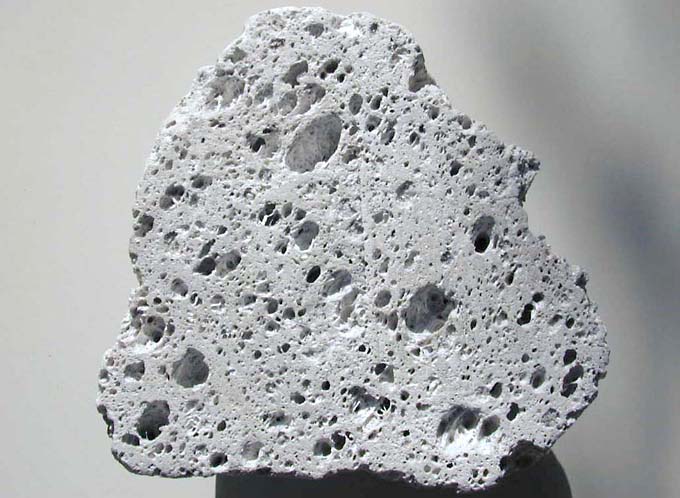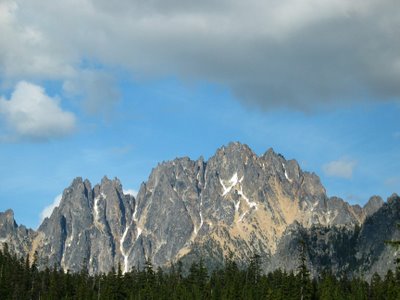Igneous Rocks: Types, Formation, and Classroom Examples
Lesson Overview
- How Are Igneous Rocks Formed?
- What Are the Main Types of Igneous Rocks?
- What Are the Key Characteristics of Igneous Rocks?
- How Are Igneous Rocks Classified?
- How Can We Identify Igneous Rocks?
- How Are Igneous Rocks Used in Various Industries?
- What Are Some Famous Igneous Rocks Examples?
- 4. Pumice - Lipari, Aeolian Islands, Italy
- 5. Gabbro - Bushveld Igneous Complex, South Africa
- 6. Andesite - Mount Fuji, Japan
Igneous rocks are formed from the solidification of molten rock material, which may be magma beneath the Earth's surface or lava that reaches the surface.
There are two primary types: intrusive (formed beneath the Earth's surface) and extrusive (formed at the surface). The rate at which the molten rock cools and solidifies determines the size of the crystals in the rock-slow cooling forms large crystals, and rapid cooling results in smaller crystals.
How Are Igneous Rocks Formed?
Igneous rocks form through the cooling and solidification of molten rock. Here's how the process works:
- Origin of Magma: Magma originates from the partial melting of rocks in the Earth's mantle and crust. This melting occurs when there is an increase in temperature, a decrease in pressure, or the addition of volatiles like water that lower the melting point of rocks.
- Magma Ascent and Evolution: Magma rises toward the Earth's surface due to its lower density compared to surrounding rocks. As it ascends, magma undergoes fractional crystallization, assimilation, and mixing, which alter its composition.
- Intrusive Igneous Rocks: These rocks form when magma cools slowly beneath the surface. Slow cooling allows large crystals to grow, resulting in a coarse-grained texture. Examples include granite and gabbro.
- Extrusive Igneous Rocks: Formed when lava cools quickly on the Earth's surface, these rocks have smaller, less visible crystals. Basalt and pumice are examples.
- Geographical Distribution: The type of rock formed depends on where the magma cools-underground (intrusive) or on the surface (extrusive). The cooling environment, such as whether lava cools underwater or on land, also affects the rock's properties.
Take This Quiz:
What Are the Main Types of Igneous Rocks?

Fig: Types of Igneous Rocks
Igneous rocks are classified into two categories: intrusive (plutonic) and extrusive (volcanic). These categories are based on where the rocks form and how fast they cool.
- Intrusive (Plutonic) Igneous Rocks:
- Formation: Formed from magma that cools slowly beneath the Earth's surface, allowing for the formation of large crystals.
- Examples:
- Granite: A common and highly durable rock, often used in construction. It consists mainly of quartz, feldspar, and mica.
- Diorite: Similar to granite but contains less quartz. It is often darker and has a more intermediate composition.
- Gabbro: A dense, dark rock composed mostly of plagioclase feldspar and pyroxene. It is a coarse-grained equivalent of basalt.
- Formation: Formed from magma that cools slowly beneath the Earth's surface, allowing for the formation of large crystals.
- Extrusive (Volcanic) Igneous Rocks:
- Formation: These rocks form when lava cools quickly at or near the Earth's surface, preventing the formation of large crystals.
- Examples:
- Basalt: The most common volcanic rock, which forms the oceanic crust. It is dark-colored and fine-grained.
- Andesite: Found in volcanic arcs, andesite has an intermediate composition between basalt and rhyolite.
- Rhyolite: A silica-rich volcanic rock with a light color, similar to granite but with smaller crystals due to rapid cooling.
- Pumice: A lightweight, porous rock that forms from the rapid cooling of lava with high gas content.
- Formation: These rocks form when lava cools quickly at or near the Earth's surface, preventing the formation of large crystals.
What Are the Key Characteristics of Igneous Rocks?
Igneous rocks have specific characteristics based on their texture, mineral composition, color, and formation. These properties help identify the rock and understand its formation history.
- Texture:
- Coarse-grained (Phaneritic): Slow cooling results in large, visible crystals.
- Fine-grained (Aphanitic): Rapid cooling leads to smaller, less visible crystals.
- Porphyritic: A mixture of coarse and fine grains, indicating a complex cooling history.
- Glassy: Extremely rapid cooling leads to a smooth, glass-like texture with no crystals.
- Vesicular: Rocks with many cavities or vesicles, such as pumice, formed from gas bubbles during cooling.
- Pegmatitic: Extremely coarse-grained, typically forming in the final stages of magma crystallization.
- Mineral Composition:
- Felsic: Rich in silica, containing light-colored minerals like quartz and feldspar. Examples include granite and rhyolite.
- Intermediate: Moderate silica content, containing both light and dark minerals. Examples include andesite and diorite.
- Mafic: Rich in iron and magnesium, containing darker minerals like pyroxene and olivine. Examples include basalt and gabbro.
- Ultramafic: Very low in silica and high in iron and magnesium, such as peridotite.
- Color:
- Light-colored (Felsic): Indicative of high silica content, as seen in granite and rhyolite.
- Dark-colored (Mafic): Indicative of low silica and high iron and magnesium content, as seen in basalt and gabbro.
- Density:
- Mafic rocks are denser than felsic rocks due to the higher iron and magnesium content.
- Chemical Composition:
- The chemical makeup of igneous rocks provides insight into the magma's origin and cooling history.
Take This Quiz:
How Are Igneous Rocks Classified?
Igneous rocks are classified based on two key factors: texture (the appearance of mineral grains) and composition (the minerals that make up the rock). This classification helps geologists understand the formation environment and the processes that led to their creation.
- Classification Based on Texture:
- Phaneritic (Coarse-grained): Formed when magma cools slowly deep within the Earth, allowing large crystals to form (e.g., granite, gabbro).
- Aphanitic (Fine-grained): Formed when magma cools rapidly, often at or near the Earth's surface, resulting in small crystals (e.g., basalt, rhyolite).
- Porphyritic: Rocks with a combination of large and small crystals, indicating complex cooling (e.g., porphyritic granite).
- Glassy: Formed when magma cools very quickly, with no crystal formation (e.g., obsidian).
- Vesicular: Contains cavities formed by trapped gases during rapid cooling (e.g., pumice, scoria).
- Classification Based on Composition:
- Felsic: Rocks with high silica content, such as granite and rhyolite, typically light-colored.
- Intermediate: Rocks with moderate silica content, such as andesite and diorite.
- Mafic: Rocks with low silica content and high iron and magnesium content, such as basalt and gabbro.
- Ultramafic: Very low in silica, rich in iron and magnesium (e.g., peridotite).
How Can We Identify Igneous Rocks?
Identifying igneous rocks involves examining several key features:
- Texture:
- Coarse-grained: Large visible crystals, indicating slow cooling beneath the Earth's surface (e.g., granite).
- Fine-grained: Small crystals due to rapid cooling at or near the surface (e.g., basalt).
- Porphyritic: Combination of large and small crystals (e.g., porphyritic granite).
- Glassy: Smooth texture with no crystals (e.g., obsidian).
- Vesicular: Presence of gas bubbles (e.g., pumice).
- Mineral Composition:
- Felsic: Rich in light-colored minerals like quartz and feldspar (e.g., granite).
- Mafic: Dark minerals like pyroxene and olivine (e.g., basalt).
- Intermediate: A mix of light and dark minerals (e.g., andesite).
- Ultramafic: High iron and magnesium content (e.g., peridotite).
- Color:
- Light-colored: Indicates high silica content (e.g., granite, rhyolite).
- Dark-colored: Indicates low silica content and high iron and magnesium (e.g., basalt, gabbro).
- Density:
- Mafic rocks are denser than felsic rocks.
- Geological Context:
- Intrusive: Found beneath the Earth's surface, slow cooling (e.g., granite, diorite).
- Extrusive: Found on the surface, rapid cooling (e.g., basalt, rhyolite).
- Testing:
- Streak Test: Rub the rock across a porcelain plate to see its streak color.
- Acid Test: Applying a drop of dilute acid to test for carbonate minerals.
- Magnetic Test: Some mafic rocks contain magnetic minerals like magnetite.
How Are Igneous Rocks Used in Various Industries?
Igneous rocks are vital in various industries due to their durability, aesthetic appeal, and unique properties. Here's a look at how these rocks are used:
- Construction Industry:
- Building Materials: Granite is commonly used for countertops, flooring, and facades due to its durability and appearance.
- Dimension Stone: Basalt and granite are used in large-scale construction projects and as decorative stone.
- Aggregate: Crushed basalt and other mafic igneous rocks are used in concrete, road construction, and as railway ballast.
- Art and Decoration:
- Sculpture: Granite is often used for statues due to its hardness and resistance to weathering.
- Interior Decoration: Polished granite and basalt are popular for high-end flooring and countertops.
- Industrial Applications:
- Abrasives: Due to their hardness, igneous rocks like basalt are used to make abrasives for grinding and cutting.
- Road Construction: Crushed igneous rocks are used as aggregate in asphalt for road building.
- Scientific and Technological Uses:
- Geological Studies: Igneous rocks help geologists understand Earth's crust and tectonic processes.
- Radiation Shielding: Some dense igneous rocks are used in radiation shielding materials.
- Cultural and Historical Significance:
- Tools and Weapons: Historically, certain igneous rocks like obsidian were used to make tools due to their sharp edges.
- Cultural Artifacts: Ancient monuments and sculptures were often made from igneous rocks due to their durability and resistance to erosion.
What Are Some Famous Igneous Rocks Examples?
Igneous rocks are not only fascinating geological formations but also iconic landmarks and crucial components of various landscapes around the world. Here are some famous examples of igneous rocks and the unique characteristics and histories that make them noteworthy:
1. Granite - Mount Rushmore, USA

Fig: Mount Rushmore, USA
Granite is one of the most well-known and widely used igneous rocks. Mount Rushmore, a monumental sculpture carved into the granite face of Mount Rushmore in South Dakota, showcases the durability and workability of granite. This site highlights the stone's resistance to weathering and its aesthetic appeal, making it a popular choice for both construction and artistic expression.
2. Basalt - Giant's Causeway, Northern Ireland

Fig: Giant's Causeway, Northern Ireland
The Giant's Causeway is a natural wonder composed of about 40,000 interlocking basalt columns, the result of an ancient volcanic eruption. Basalt, a fine-grained igneous rock, cooled rapidly at the surface to form the distinctive hexagonal columns. This site demonstrates the unique and intriguing forms that basalt can take, which is also used extensively in construction, particularly in flooring, road building, and as crushed stone for concrete aggregate.
3. Obsidian - Obsidian Cliff, Yellowstone National Park, USA

Fig: Obsidian Cliff, Yellowstone National Park, USA
Obsidian Cliff in Yellowstone National Park is a historic source of naturally occurring volcanic glass. Obsidian is formed from the rapid cooling of high-silica lava, which inhibits crystal growth and results in a smooth, glassy texture. This rock has been used by various cultures for making sharp tools and weapons due to its conchoidal fracture properties, which allow it to break into pieces with sharp edges.
4. Pumice - Lipari, Aeolian Islands, Italy

Fig: Lipari, Aeolian Islands, Italy
The island of Lipari is part of the Aeolian archipelago and is renowned for its extensive pumice quarries. Pumice is a light, porous igneous rock that forms during explosive volcanic eruptions as magma containing a high gas content is violently ejected and cools quickly. It is widely used in industry as an abrasive in polishes and cleaners, and in beauty products for exfoliating skin. Its light weight makes it useful in construction, particularly in lightweight concrete.
5. Gabbro - Bushveld Igneous Complex, South Africa

Fig: Bushveld Igneous Complex, South Africa
The Bushveld Igneous Complex is one of the largest layered igneous intrusions in the world and contains significant deposits of gabbro. It is extensively mined for its rich platinum group metal ores. Gabbro, being a dense, mafic rock, has lesser visibility in surface applications but is crucial in the geological and economic contexts due to its association with various metal ores.
6. Andesite - Mount Fuji, Japan

Fig: Mount Fuji, Japan
Mount Fuji, an active stratovolcano in Japan, is composed predominantly of andesite. Andesite is an intermediate volcanic rock that is characteristic of many volcanoes along subduction zones. Its presence in such iconic volcanoes underlines the geodynamic processes of melting and magma formation in subduction settings.
Take This Quiz:
Rate this lesson:
 Back to top
Back to top



(142).jpg)
